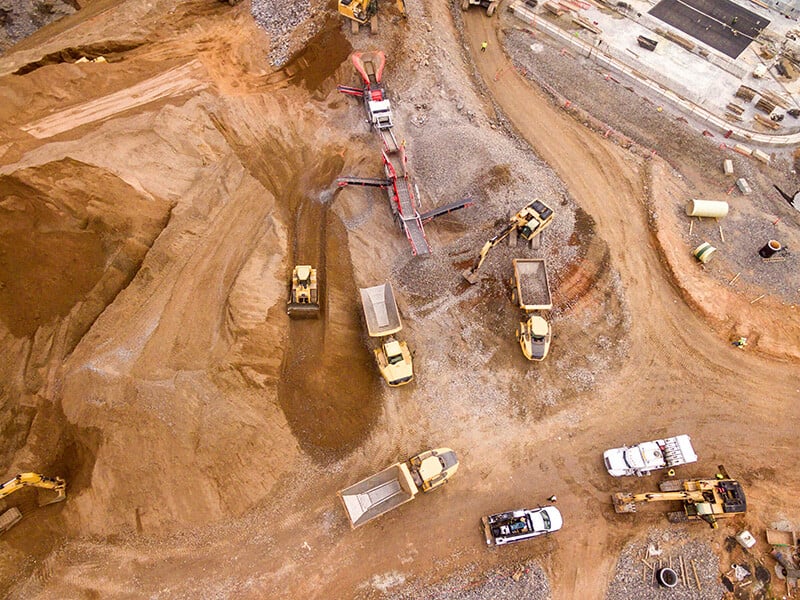The foundation of any successful development project begins long before construction crews break ground. It starts with the critical process of selecting the right site. From residential communities to agricultural fields, each type of development has unique requirements and challenges.
This checklist walks you through the essential steps for identifying and assessing prime build sites, ensuring your next project is set up for success.
Contents
Step 1: Define Project Goals
Step 2: Identify Site Constraints and Features
Step 3: Assess Project Costs and Market Trends
Step 4: Plan for Site Construction
Step 1: Define Project Goals
A clear understanding of your project’s purpose and objectives is the first step in selecting the ideal build site. Start by defining the type of development:
- Residential: Homes and neighborhoods
- Commercial: Offices, retail spaces, and entertainment hubs
- Industrial: Warehousing, manufacturing, and distribution centers
- Agricultural: Crop and livestock farming
- Recreational: Parks, sports fields, and nature reserves
Key Questions to Consider:
- Who is the target audience or market?
- What features are non-negotiable?
- What location factors are essential for success?
Step 2: Identify Site Constraints and Features
Not all land is suitable for development. A thorough site evaluation will reveal potential constraints and opportunities.
Key considerations include:
- Zoning Regulations: Ensure compatibility with local zoning laws.
- Property Lines: Identify legal boundaries and map property lines to prevent encroachments.
- Environmental Factors: Evaluate the site’s current environmental state, including soil suitability, flood risk, climate, and sensitive areas.
- Easements: Locate existing easements and evaluate additional easements that may be necessary for your development plans.
- Potential Permits: Research local permitting requirements, including environmental and zoning regulations.
- Utilities: Assess the availability of essential utilities.
- Surrounding Areas: Consider proximity to schools, businesses, emergency services, and other amenities that affect land desirability.
Step 3: Assess Project Costs and Market Trends
Once a site aligns with your goals, evaluate its financial feasibility and marketability.
Cost Considerations:
- Land Price & Development Costs: Compare land values in the area and estimate construction costs.
- Financing & Incentives: Research loans, grants, and tax incentives that apply to your project type. (For example, agricultural projects may qualify for federal grants, while urban developments could benefit from tax breaks.)
- Cash Flow Potential: Analyze return on investment (ROI) based on property appreciation, leasing potential, or resale value.
Market Research Insights:
On top of assessing finances for the development project, you will want to research the market trends and real estate trends surrounding the build site.
- Demand Trends: Identify emerging growth areas where residential or commercial demand is increasing.
- Competitive Analysis: Evaluate comparable property sales and planned developments nearby.
- Risk Mitigation: Research land price trends—rising, stable, or declining—to avoid overpaying in stagnant or oversaturated markets.
For comprehensive insights into financial options, best practices, and step-by-step guidance on land acquisition, explore the in-depth resources available on Land Values Insider.
Step 4: Plan for Site Construction
Once you’ve selected a site, the next step is preparing it for development.
Site Analysis
A professional site analysis evaluates the physical, environmental, and economic characteristics of the land.
This includes:
- Topography and soil conditions
- Environmental impact assessments
- Proximity to key infrastructure and amenities
Work with experts like architects, economists, and urban planners to ensure your site meets project requirements.
Land Survey
A land survey is essential for mapping legal boundaries, identifying encroachments, and confirming land suitability.
Professional land surveyors will document:
- Lot dimensions and property lines
- Existing structures or obstructions
- Natural land features that may impact construction
Once site assessments are complete, you can move forward with clearing, grading, utility installation, and permitting approvals.
Construction Site Selection Tips
When selecting a build site, consider these key factors:
- Community Impact: Will the project integrate well with the surrounding area? Is there local support or opposition to the development?
- Environmental & Traffic Considerations: How will noise, air quality, and traffic patterns access affect the area's economic environment?
- Future Growth Potential: Does the land allow for future expansion? Does this site meet current infrastructure, parking, or overflow needs?
- Infrastructure Readiness: Are utilities and roadways in place, or will significant investments be needed?
Final Thoughts
Identifying the perfect build site doesn’t have to be overwhelming. Whether you're defining your criteria, evaluating constraints, or planning construction, each step brings you closer to a successful development. From defining precise criteria to identifying prime opportunities nationwide, Acres equips you with the tools and insights to simplify site selection.
Explore the Layer Library today and see how data-driven mapping can transform your land development research.
